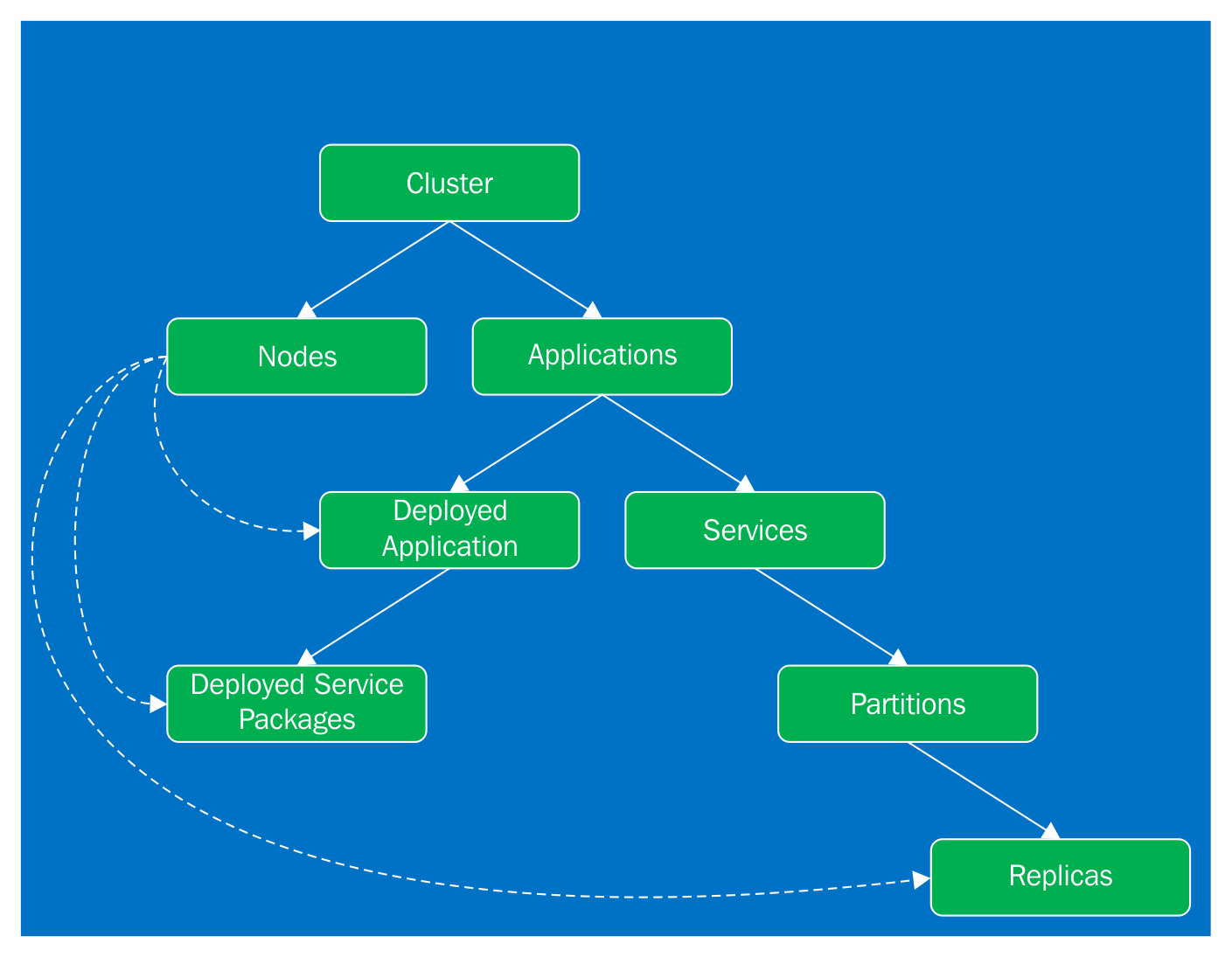Health entities
Health entities, in the context of Service Fabric, can be considered as logical entities used by the runtime. These entities form a logical hierarchy based on the dependencies and interactions among them.
Service Fabric uses a health store to persist the hierarchy of its health entities and their health information. To ensure high availability, health store is implemented as a stateful service within the Service Fabric cluster and is instantiated with when the cluster starts.
The health subsystem leverages the health entities and hierarchy to effectively report, debugg, and monitor. The following diagram illustrates the hierarchy of health entities:

Hierarchy of health entities
You may notice that the health entities match the Service Fabric deployment entities discussed earlier in this book. Let's dive deeper to understand each of these entities and the parent-child relationships illustrated in the preceding figure.
The root node, Cluster represents the health of Service Fabric...




































































